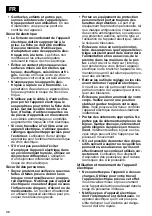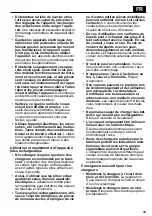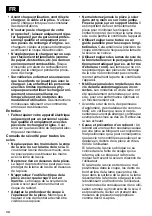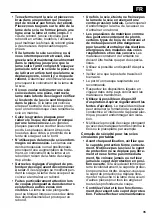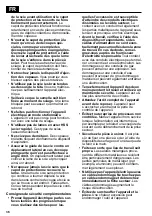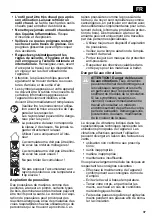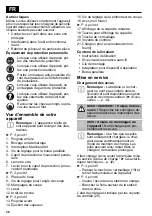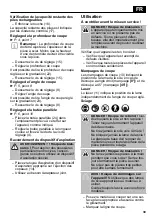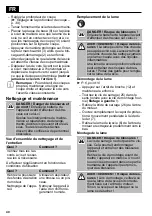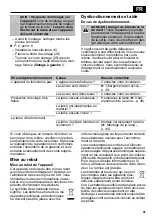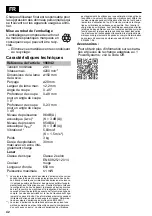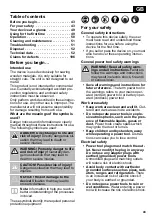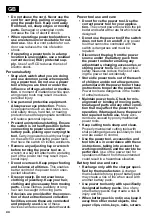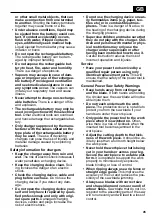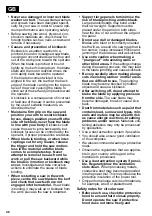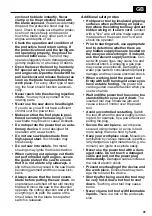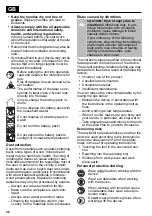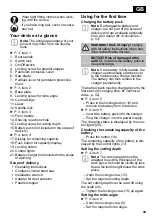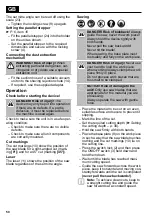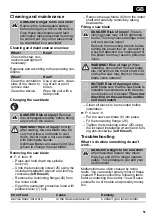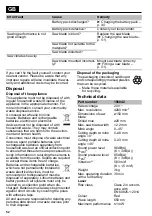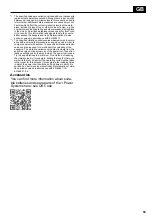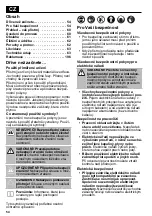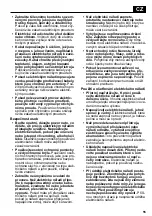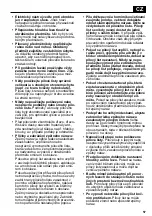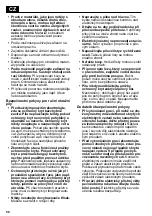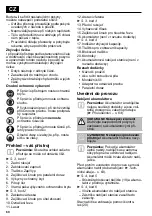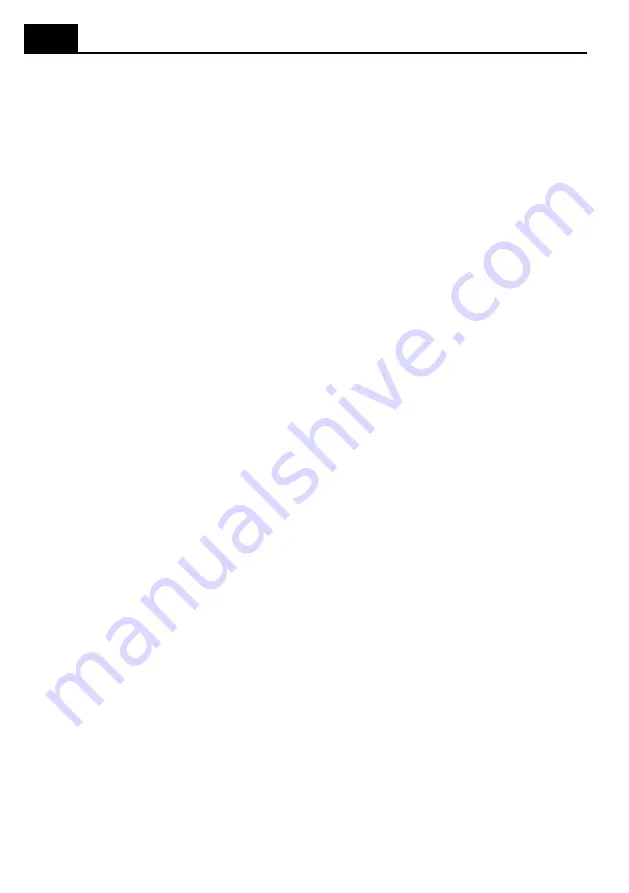
GB
46
• Never use damaged or incorrect blade
washers or bolt.
The saw blade washers
and screws have been designed specifi-
cally for your saw in order to ensure opti-
mum performance and operating safety.
•
Before sawing into wood, plywood, con-
struction materials etc. check these for
foreign bodies such as nails, screws and
remove if necessary.
• Causes and prevention of kickback:
Kickback is a sudden reaction to a
pinched, bound or misaligned saw blade,
causing an uncontrolled saw to lift up and
out of the work piece toward the operator.
When the blade is pinched or bound
tightly by the kerf closing down, the blade
stalls and the motor reaction drives the
unit rapidly back toward the operator.
If the blade becomes twisted or mis-
aligned in the cut, the teeth at the back
edge of the blade can dig into the top sur-
face of the wood causing the blade to
climb out of the kerf and jump back toward
the operator.
A kickback is a consequence of incorrect
or fault use of the saw. It can be prevented
by the use of suitable measures, as
described below:
• Maintain a firm grip on the saw and
position your arm to resist kickback
forces. Always position yourself to the
side of the blade, never have the blade
in line with your body.
Kickback could
cause the saw to jump backwards, but
kickback forces can be controlled by the
operator, if proper precautions are taken.
• When blade is binding, or when inter-
rupting a cut for any reason, release
the trigger and hold the saw motion-
less in the material until the blade
comes to a complete stop. Never
attempt to remove the saw from the
work or pull the saw backward while
the blade is in motion or kickback may
occur.
Investigate and take corrective
actions to eliminate the cause of blade
binding.
• When restarting a saw in the work
piece, centre the saw blade in the kerf
and check that saw teeth are not
engaged into the material.
If saw blade
is binding, it may walk up or kickback from
the work piece as the saw is restarted.
• Support large panels to minimise the
risk of blade pinching and kickback.
Large panels/boards may bend under
their own weight. Supports must be
placed under the panel on both sides,
near the line of cut and near the edge of
the panel.
• Do not use dull or damaged blades.
Blades with blunt or incorrectly oriented
teeth will, as a result of a sawn gap that is
too narrow, cause increased friction and
jamming of the blade as well as kickback.
• Use extra caution when making a
"plunge cut" into existing walls or
other blind areas.
If the settings change
during the sawing process, this may lead
to the blade jamming and cause kickback.
• Be very carefully when making plunge
cuts in existing walls or in other areas
that are difficult to see.
The plunging
blade may become blocked by hidden
objects and cause a kickback.
• After switching off, do not attempt to
brake the blade by applying pressure
from the side.
The saw blade may
become damaged, break or cause kick-
back.
• Dust from materials such as paint that
contains lead, some wood types, min-
erals and metals may be a health risk
as cause allergic reactions, breathing
problems and/or cancer.
Materials con-
taining asbestos may only be processed
by specialists.
•
Use a dust extraction system if possible.
•
You should also ensure good ventilation
of the workplace.
•
We also recommend wearing a protective
mask.
•
Observe the regulations that are applica-
ble in your country with regard to the
materials to processed.
• Use a dust extraction system if possi-
ble. Regularly blow the ventilation
slots clean.
When processing metals,
conductive dust may become deposited
into the power tool. This may influence the
protective insulation of the power tool.
•
Only perform plunge cuts in soft materials,
for example, wood or plasterboard.
Safety notes for circular saw
• Before each use, check the protective
hood to ensure that it closes properly.
Do not operate the saw if protective
hood does not move freely and

